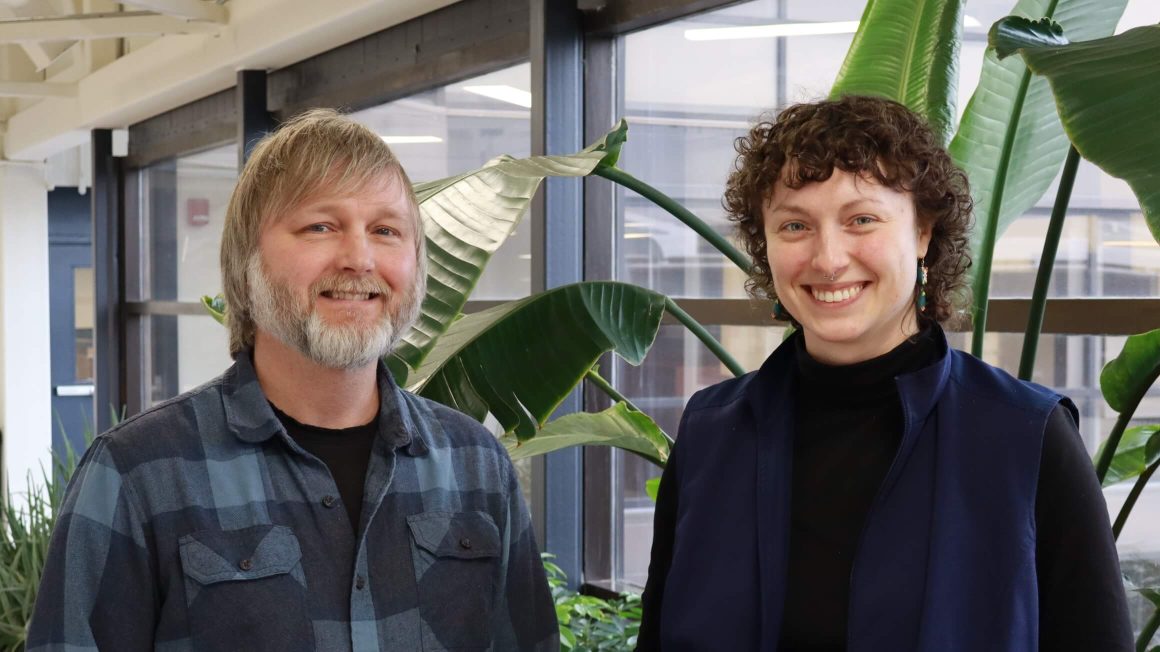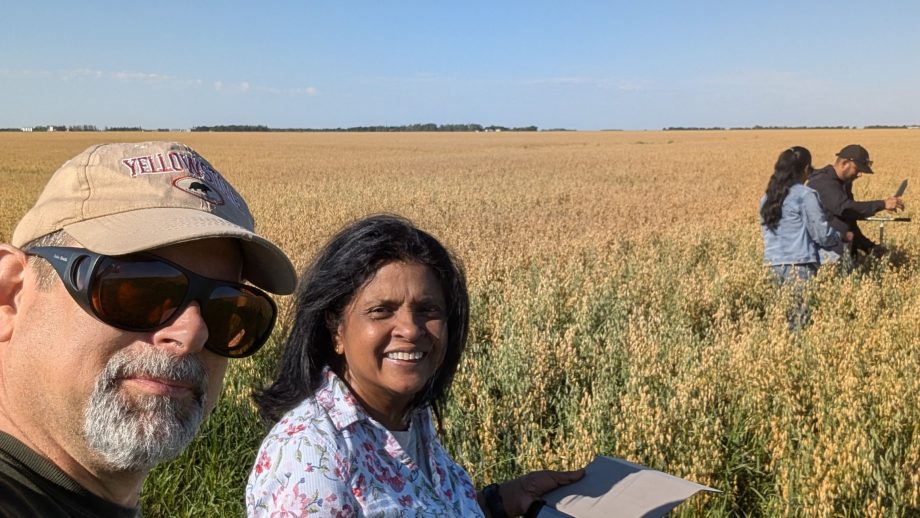A research team at The University of Winnipeg has secured federal funding to help small businesses in Canada’s forestry sector adapt to a changing climate in ways that make financial, logistical, and environmental sense.
Project Lead Dr. Ryan Bullock and Senior Research Associate Bryanne Lamoureux are overseeing the three-year research project, entitled “Maximizing Pathways to Forest Sector Adaptation by Reducing Barriers for Small Enterprise.”
Their application—which Lamoureux helped to co-develop—landed the project $187,127 from Natural Resources Canada’s (NRCan) Climate Change Adaptation Program. The project’s industry partners, Dryden Forest Management Company Ltd. and the Central Canada SFI Implementation Committee (CCSIC), are also contributing funding and in-kind support.
Adaptation is in everybody’s interest.
Dr. Ryan Bullock
Lamoureux, an Environmental Studies graduate of UWinnipeg and Dalhousie University, said forestry sector leaders are eager to contribute climate change adaptation and mitigation solutions.
Dr. Bullock, Professor in the Department of Environmental Studies and Sciences and Tier II Canada Research Chair in Human-Environment Interactions, agreed.
“This research fits with what forest managers are asking for. They want resources,” he said.
Lamoureux and Dr. Bullock are members of the Environment and Society Research Group (ESRG) at UWinnipeg, which explores the human dimensions of environmental resources in support of sustainability. The team was already researching adaptation and forest management planning when NRCan put out its call for research to help the forestry sector adapt to climate change.
One of the project’s goals is to develop a decision-making framework, which will be presented at upcoming conferences in Vancouver and Thunder Bay. The research team is also holding roundtables with stakeholders and rightsholders in four key regions of forestry activity in Manitoba and Ontario: Swan River, The Pas, Kenora, and Sudbury. Case studies will be created around each of these locales.
Boreal forests and climate change
Boreal forests, much like oceans and the Arctic, are windows into Earth’s changing climate. Canada’s forests are becoming drier, making some regions more susceptible to unusual wildfires and other threats like blowdown, while pests are having an easier time surviving the shorter, warmer winters. Going forward, a more proactive, anticipatory approach to forest management is needed to minimize risks, Dr. Bullock said.
The foundation of this proactive approach is a model of forestry stewardship called co-management or shared management, which typically involves Indigenous groups, provincial governments, and NGOs making collaborative decisions about natural resources. Over the past decade, shared management practices have seen widespread adoption across Canada, setting the stage for academic research focused on tangible steps that forestry companies can take to adapt to climate change. It’s research situated at the intersection of public and private interests.
“How companies adapt to managing our public forest should be an immediate concern and given that attention by the public and by policymakers, because the forest is publicly owned,” Dr. Bullock said. “In that context, adaptation is in everybody’s interest.”
Forestry sector challenges
Forestry might bring to mind big names like Weyerhaeuser, but small and micro-sized companies account for 99 per cent of Canada’s forestry enterprises, making them the “front line” for implementing adaptation strategies, Lamoureux said.
But these smaller companies have more limited resources, and often face challenges in integrating climate adaptation into their operational practices. Dr. Bullock said he and his team want to bridge the gap between the academy and industry by developing tools, policies, and training to aid management decision-makers and frontline professionals in managing environmental change.
“The challenge is to fill a gap,” he said. “It’s really about building blocks. Let’s be academic about it, but let’s also work in a very applied mode.”
Lamoureux said many longtime foresters are finding that the old rules of thumb don’t hold anymore: wetlands aren’t freezing as deeply, shortening the heavy equipment season; huge rainfalls are washing out roads and overwhelming culverts one year, followed by droughts the next.
Other challenges boil down to dollars and cents—adaptation can be expensive. Federal regulations can create tensions that make it difficult for small enterprises to make meaningful changes.
“We’re seeing that the biggest limitation is financial” Lamoureux said.
Steven Young, a project partner and general manager of Dryden Forest Management Company, which manages 136,000 hectares of land in northwestern Ontario, echoed that concern.
“Everything comes down to fiscal and financial management,” Young said. “That’s one of the key burdens. We’re really bound by a very constrained market. Whatever we do has to be cost-effective and really make sense.”
Finding good information about climate change, and translating scientific language into management or operational actions, is another big challenge, Young said.
“Research like this is, in my mind, critically important to keeping things moving. There’s always new obstacles and challenges that we face, and having these opportunities to work with partners, it can really start to break some of those barriers and dig in to some of the issues that could cause disruptions or problems as we move forward,” Young said.
Focusing on solutions
Lamoureux listed several aspects of forestry and logging that could unlock workable solutions with the right research behind them.
Heavy equipment could be outfitted with tires that minimize ruts and soil compaction on the forest floor. Electrification and cold-weather heaters could reduce idling and carbon emissions in heavy diesel equipment.
Currently, mills are stationary, with timber hauled from farther and farther away as harvesting progresses. In the future, new technology may enable small products like wood pellets to be processed on-site.
“What if we take the mill to the woods?” Dr. Bullock said.
On the infrastructure front, road, bridges, and culverts must be built to handle extreme weather. Temporary access roads could be built in collaboration with local municipalities or First Nations and converted to public infrastructure.
At the policy level, Dr. Bullock and Lamoureux said policy-makers can’t assume that the climate won’t change. Benchmarks and assumptions will need to adjust along with the climate. They hope to extend the impact of their research by generating three policy briefs—one for Manitoba, one for Ontario, and the third federal in scope—that could open up partnerships with government.
Now one year into their three-year project, both Lamoureux and Dr. Bullock are hopeful about the future of forestry in Canada.
“Trees regrow so we can do forestry sustainably if we can figure out the logistical issues,” Dr. Bullock said.
Lamoureux noted wood-based products offer an alternative to plastics.
In a time when some climate change actions can feel overwhelming, the work has proved meaningful.
“We have the challenge of trying to do something that hasn’t been done before. But that’s also why it’s rewarding and important,” Dr. Bullock said.





